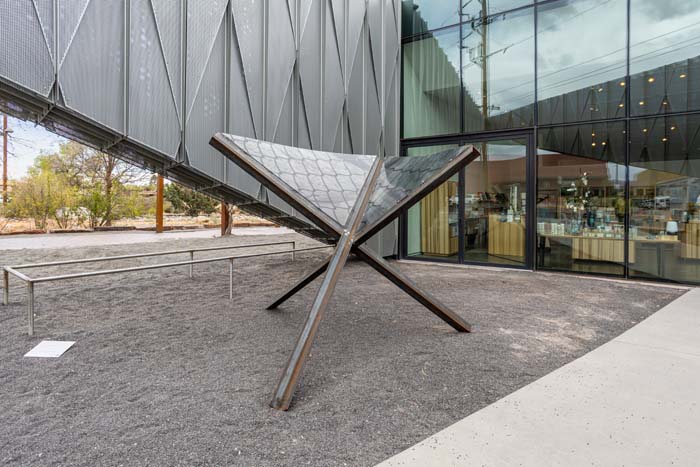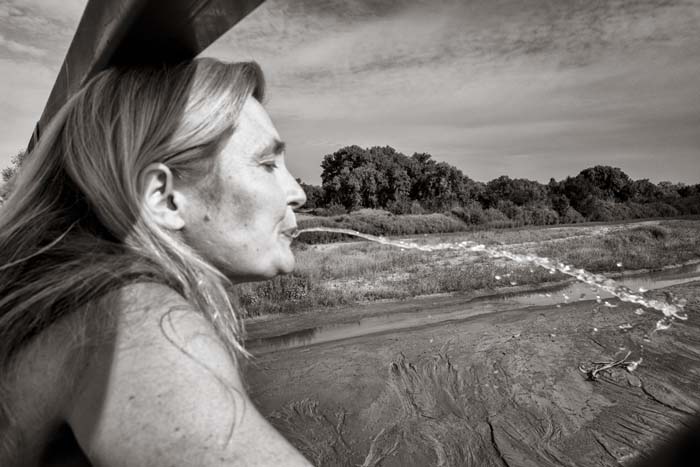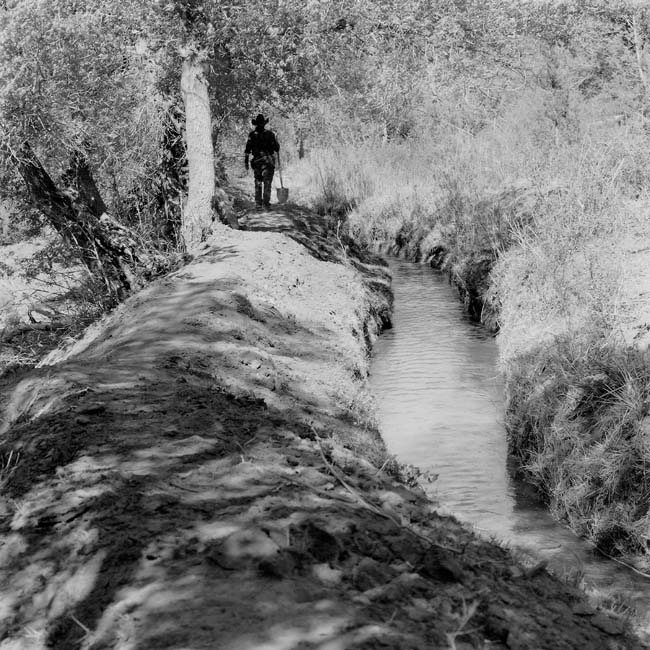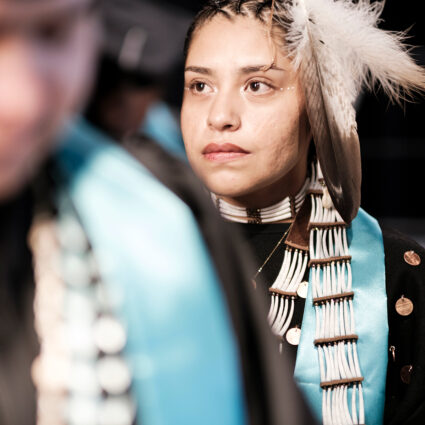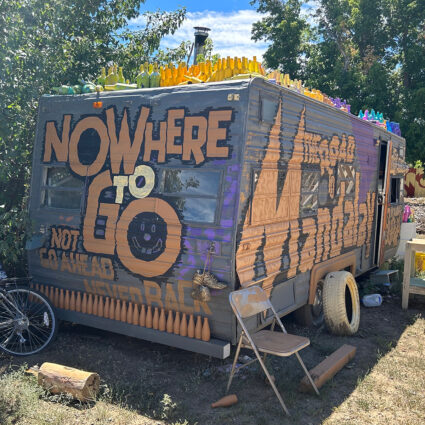Stories of water in the Southwest are told through the lens of artists in Going with the Flow: Art, Actions, and Western Waters at SITE Santa Fe.
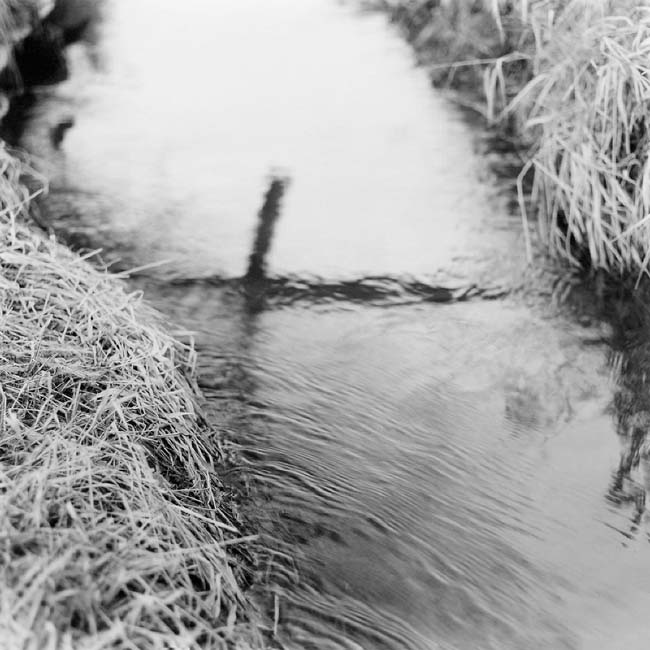
This article is part of our Finding Water in the West series, a continuation of the ideas explored in Southwest Contemporary Vol. 7.
SANTA FE— They say you never step into the same river twice, and with this in mind, it makes sense that an exhibition exploring water in the Southwest would be multi-faceted, include the work of multigenerational artists and various media, and have many moving parts that can be seen (and heard) both inside an exhibition space and outdoors.
SITE Santa Fe’s Going with the Flow: Art, Actions, and Western Waters is an ambitious exhibition curated by SITE curator Brandee Caoba and renowned art critic and activist Lucy R. Lippard. The two had worked together previously on another exhibition and wanted to collaborate on another project. The show has been two years in the making.
Going with the Flow is also longer than the typical SITE exhibition, at three and a half months—something Caoba and Lippard had to do in order to ensure everything they visualized could come to life: that the Santa Fe River would be flowing for a site-specific piece, that the outdoor work would be up long enough for people to stumble upon it, that talks and gatherings and performances could be fit into the schedule.
“You can enter the show in many different ways,” Caoba says.
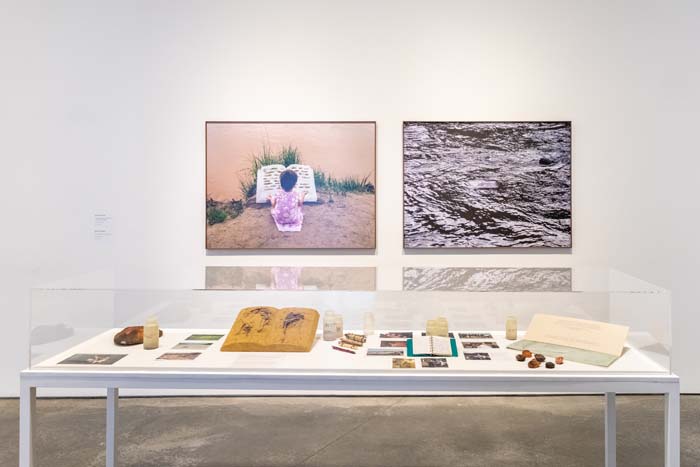
Each artist is showing work inside SITE and offsite, and nearly all of the pieces in Going with the Flow were created specifically for the show.
Basia Irland, for example, has devoted decades to researching water throughout the world and educating people on its vital importance—all in a visually beautiful way.
She creates what she calls Ice Books, ice sculptures made from river water, filled with frozen seeds, and carved into the shape of an open book. After researching a specific river, she gathers seeds that are native to the area and beneficial to its ecosystem, then releases the Ice Books into the water, so as the sculptures thaw, seeds are dispersed into that habitat.
Part performance art, part activism, these Ice Book releases have occurred all over the world. In June 2009, she released eleven Ice Books into the Rio Grande, and, just yesterday, on May 14 an Ice Book release was performed into the Santa Fe River.
SITE worked with the City of Santa Fe River and Watershed to ensure correct timing and placement, as well as Plants of the Southwest to help identify seeds. SITE’s Education Department worked with local students to source local clay to create seed bombs to disperse during the gathering as well.
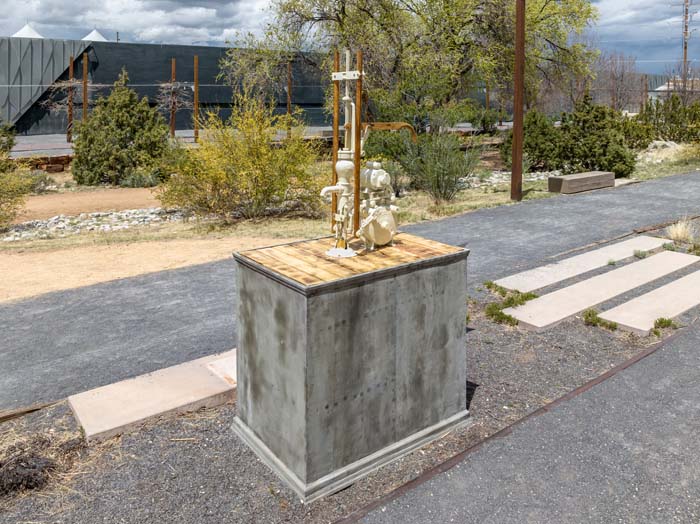
Sharon Stewart is another artist in the exhibition who has devoted years to studying water. A photographer, she has documented acequias for three decades. Her black-and-white gelatin silver prints are on display at SITE for the duration of the show, and she has also organized a daylong community celebration of water in Mora on June 24.
All exhibiting artists are local to Northern New Mexico, with the exception of M12 Studio, a small art collective and nonprofit based in Colorado and Texas. Their work in this show focuses on big agriculture and utilizes GIS land animations that give an overview of water usage over a period of time. They, too, have a piece outdoors in the Railyard, as well as inside SITE.
“This show is activating spaces outside of the museum, which is important,” Caoba says. “Art shouldn’t be confined to exhibition spaces, and this adds a layer of accessibility.”
SITE will host a panel discussion about water on July 12 that will not be a typical art talk but rather a conversation with activists and people in the community who work with water, such as those working for the city’s watershed.
The grand finale of sorts will come on July 29, just two days prior to the exhibition’s end on July 31, with a live choral performance of There Must Be Other Names for the River in the SITE auditorium.
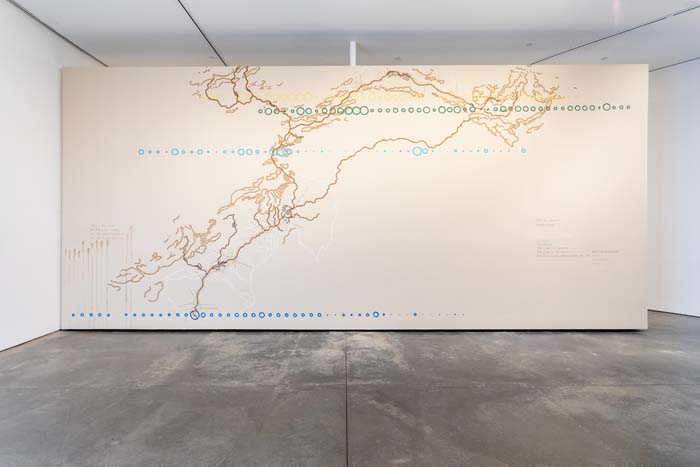
Artists Marisa Demarco, Jessica Zeglin, and Dylan McLaughlin developed the project in 2019, which has a visual and audio component based on stream flow data of the Rio Grande. They collected data from six points along the river, which can be seen visually in their twenty-eight-foot mural in the exhibition space. One data point is located at the closest the Rio Grande is to SITE, which the artists check every day, and once a week, they install the newest data to the mural itself, so viewers can see the flow of water over the duration of the show.
Musically, the artists installed a site-specific sound installation in Santa Fe Railyard Park. Six speakers represent the six river data points and play—on loop—a musical composition based on the collected data. Essentially, the river is being sung.
During the live performance, six singers will represent more than 1,800 miles of the Rio Grande stream flow data. The artists also asked the singers to project this data into the future, so they’re singing the past fifty years of stream flow data, current data, and also improvising the future.
“The whole exhibition is a deep dive into our relationship with water—the connections between people and water, water protection, ecological personhood—or the idea that a river could have the same rights as a person—mythology, tradition,” Caoba says. While it’s a small show, she continues, “It’s really rich.”
Join us for Finding the Flow: A Virtual Symposium Considering Art and Water presented by Southwest Contemporary, in partnership with SITE Santa Fe, tonight—Tuesday, May 16, 6-7:30 pm MT.
